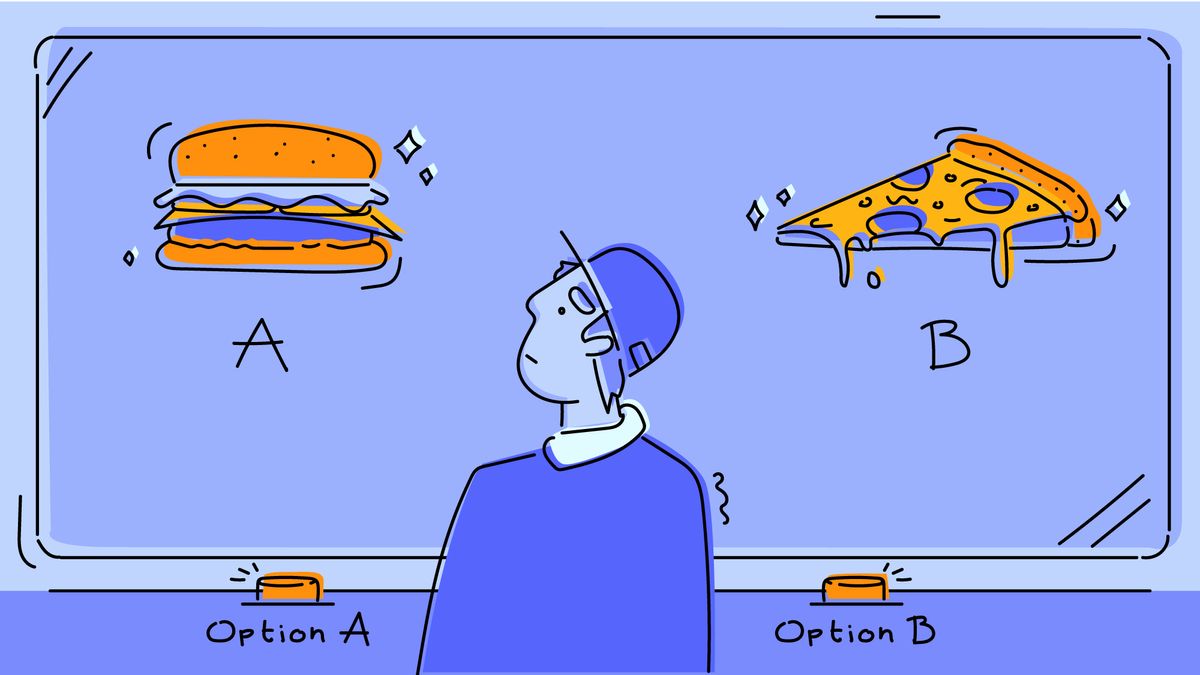Negative Opportunity Cost

In an earlier post, I discussed displacement value, and helpful comments from a reader made me realize this could be described as a negative opportunity cost.
First, the definition of opportunity cost from the Concise Encyclopedia of Economics:
When economists refer to the "opportunity cost" of a resource, they mean the value of the next-highest-valued alternative use of that resource.
For example, if I could only eat either a pizza or hamburger for lunch, the opportunity cost of eating the pizza is the value of eating the hamburger. By eating the pizza, I am forgoing the opportunity to enjoy the hamburger.
This example assumes I like hamburgers, so the value of eating a hamburger is positive, and the opportunity cost paid is positive, i.e. more than zero.
But what if I don’t like hamburgers? What if I find them unhealthy, so eating one actually has a negative value to me? Would that mean that eating the pizza has a negative opportunity cost because the next-highest-valued alternative has a negative value?
According to some, the answer is no:
Negative opportunity costs are impossible because a business can always choose not to act on available opportunities
They mean that I can always choose to not eat anything for lunch, rather than eat something unhealthy.
Is this always true though? Can one always choose to not act on “available opportunities” i.e. resist junk food? I assume we’ve all had times when we’ve eaten something which was actually worse than eating nothing because it was the only thing available and we were hungry.
Why We Pack Salad
Now suppose that the lunch options are a salad or a hamburger, again assuming I definitely am going to end up eating something. In this case, the opportunity cost of choosing the salad is missing out on the unpleasantness of eating a hamburger I don’t like, a negative value.
That means even if I get absolutely no enjoyment or value from eating the salad, the fact that it has prevented me from eating the hamburger means it has displaced a negative value. The option to not eat anything is not available in practice, so the next-best alternative has a negative value. By choosing the salad, I “pay” the negative opportunity cost of the negative value hamburger and therefore actually benefit.
This explains why we pack salads that we don’t particularly care for: they can still prevent us from otherwise eating hamburgers.
Negative opportunity costs arise when no positive or zero value alternatives are available, but still, an option must be chosen.
Examples
Where do you find examples of negative opportunity costs? The Theory of Displacement Value post details a number of these, but here are a few summarized:
- Good gut bacteria have numerous benefits, but they also simply crowd out pathogenic bacteria by taking up space and consuming all the available nutrients. The alternative to good gut bacteria is bad gut bacteria: having no bacteria, i.e. a sterile gut, is not an option.
- Homeopathy is an innocuous water-capsule placebo, preferable to other expensive or dangerous placebos. A desire for alternative medicine seems constant within societies, so this harmless and cheap placebo is valuable for displacing worse options.
- Traditional religions have had the chance to moderate over time to become mostly benign. If total religiosity is truly conserved and some sort of religious-type belief is inevitable, traditional religions displace more recent and dangerous political religions and cults.
You can find examples of negative opportunity costs everywhere once you start looking for them. I’ll leave you with this one from The Streets:
Today I have achieved absolutely nowt
In just being out of the house, I've lost out
If I wanted to end up with more now
I should have just stayed in bed like I know how
Thanks to Uri and Kaamya for feedback on drafts of this.